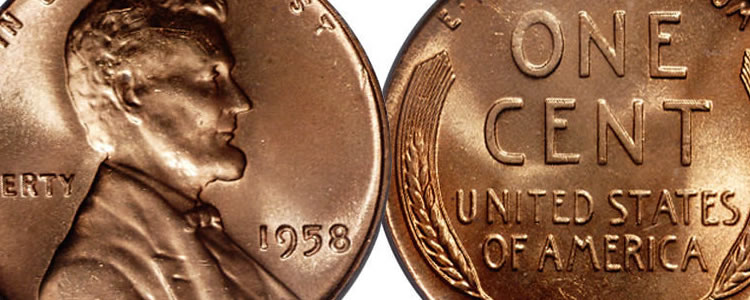Everybody has found an old coin in their change or inherited something they just do not know about. From wheat pennies right on up to $20 gold pieces, old coins are worth money. Sometimes they can be worth a fortune.
Buy, Value or Appraise Your US Coins
Bid or buy US coins for sale, value your item, or request a free appraisal to sell your collection.
Quick Facts:
-Do NOT clean coins! This hurts the value tremendously and cleaning/conservation must be done by a professional.
-Wheat pennies generally trade anywhere from two cents to twenty dollars for the most common dates.
-Wheat pennies in Uncirculated or “Brand New” looking condition from the 1940’s and ‘50s are not rare by any stretch.
The Wheat cent is one of the most famous coins to ever be made in the United States. The coin was designed by Victor David Brenner in honor of Lincoln’s 100th birthday in 1909. The coin had a long run from 1909 through 1958. The obverse or front of the coin has remained relatively the same since its inception, and the designs on the reverse or back of the coin have changed only seven times in the last 104 years. Five of those eight changes happened during the last four years, but more on that later. The Wheat cent is the longest running coin in American history to have the same Presidential figure on the obverse.
What are those Wheat cents worth? Almost everybody has found one in their change and thrown it to the side. Some people have only one or two, but I have a client who is trying to amass 1,000,000 coins! The Wheat cent has a number of rare “key” dates and varieties that can be worth anywhere from $50 to over $1,000!
In the year 1909, there were 4 different varieties of the Wheat cent made. The coin was minted in Philadelphia and San Francisco. The coins were made both with and without the initials of the designer, Victor Brenner, on the reverse of the coin near the bottom. The initials V.D.B. stood out on the bottom, and they were quickly removed from the design after only a short time because the designers of U.S. coins did not generally make their initials stand out like that. Philadelphia and San Francisco both struck coins with the initials and without the initials. The way to tell the difference between a V.D.B. and a non-V.D.B. is to simply look at the reverse for the initials. The way to tell where the coin was made is to look under the date and see if there is a letter. If it was from Philadelphia, there will be no letter, however, if it is from San Francisco, it will have the letter “S” under the date.
Philadelphia coins with the V.D.B. initials are very common and trade generally for less than ten dollars per coin. The Philadelphia coins without the V.D.B. are even more common, and these trade at less than five dollars per coin. San Francisco coins are the ones worth more money. A San Fran V.D.B. can command anywhere from a few hundred dollars to over one thousand! A coin from San Francisco without the V.D.B. is still worth $50 to $150 depending upon the condition. If you have ever discovered one of these two coins from San Francisco or plan to buy one, I highly recommend getting it authenticated by a professional rare coin dealer. Counterfeit coins are much more likely to exist when a coin has a high value like one of these.
The other dates to look for in the Wheat cent series are the following: 1914-D, 1931-S, 1955 doubled-die variety, and the 1922 No Mintmark Variety. The 1914-D and 1931-S coins are worth $50 to $200 in most cases depending upon the condition. The 1914-D coin was minted in Denver. The 1922 coin was minted in Denver as well, but there is an error where the D was left off the coin and these are rare items. The 1955 doubled-die is one of the most famous Wheat cents out there. This coin shows two dates instead of just one! The 1955 doubled die is worth anywhere from $500 to $2,000 in most cases. As with the above mentioned rare dates, all of these should be professionally authenticated.
Next month, I am going to delve into the fascinating story of World War II coinage. This includes nickels made out of silver, the steel cent, the 1943 copper that everybody hopes to find (yes, this is real, I have held them before), and shell case cents. If you have question on coins, paper money, medals, or tokens, please send me an email or call me because future additions of this column will be question and answer sessions if there is enough demand.
Want to know what YOUR coin is worth? Check out Heritage’s FREE coin price guide for quick answers on what your item could be worth.
